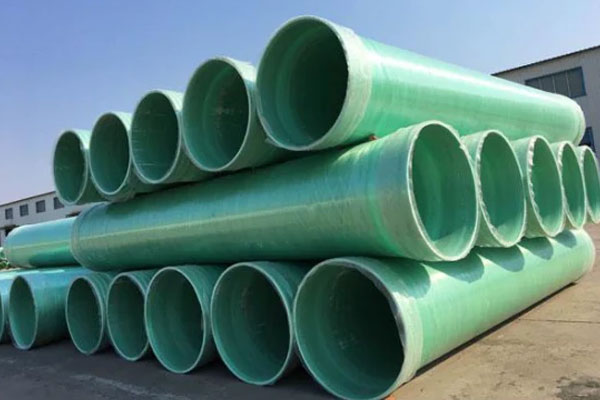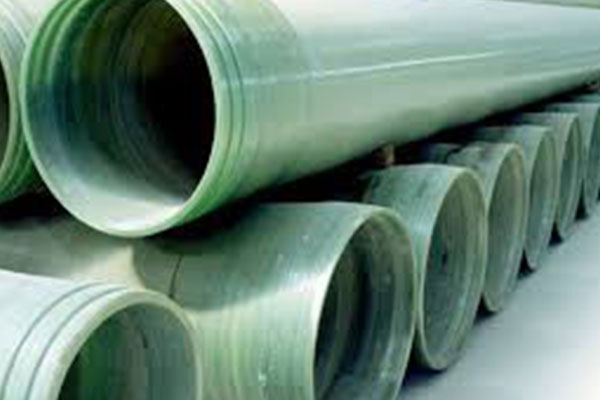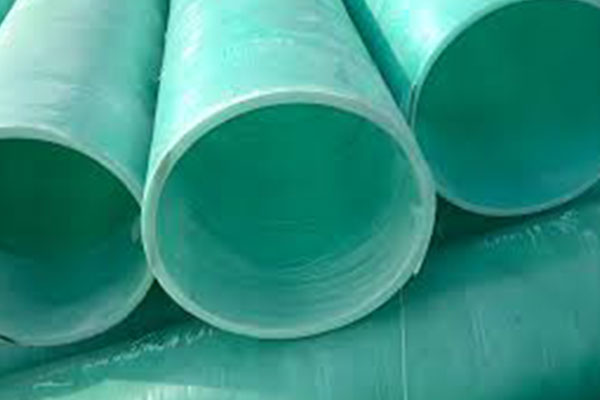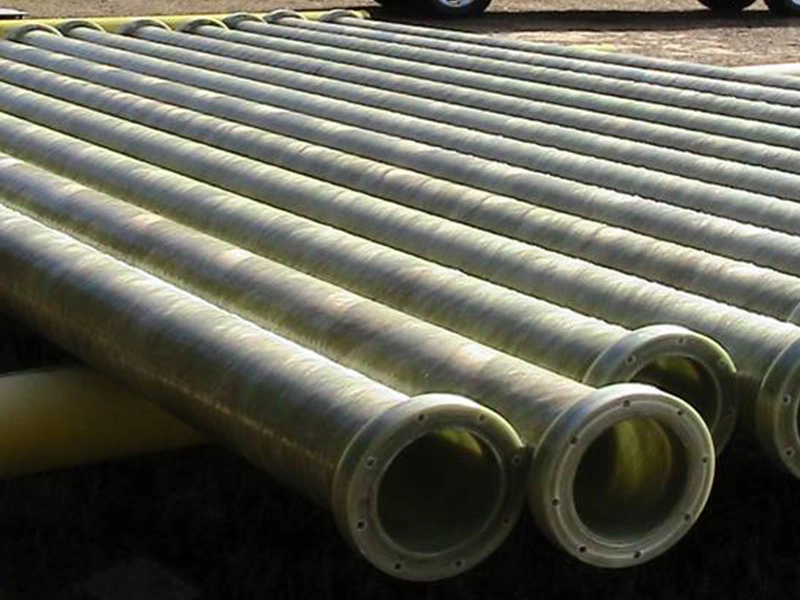FRP process pipe, also known as Glass Fiber Reinforced Plastic (GRP) process piping, is an advanced composite piping system designed for the transportation of corrosive, abrasive, and high-temperature fluids. These pipes are made by combining high-strength glass fibers with a thermosetting resin (such as polyester, vinyl ester, or epoxy) to form a durable, lightweight, and chemically resistant pipe system.
Introducción al rendimiento del producto
The FRP process pipe is engineered to provide long-term, cost-effective, and corrosion-free operation for chemical plants, industrial facilities, water treatment plants, refineries, desalination systems, and more.
🔧 2. Manufacturing Process
FRP process pipes are typically manufactured using the following methods:
a. Filament Winding
-
Continuous or helical winding of fiberglass roving impregnated with resin over a rotating mandrel.
-
Controlled resin-to-glass ratio for consistent strength and stiffness.
-
Common for pressure pipes and larger diameter systems.
b. Centrifugal Casting
-
Layers of resin and reinforcement are cast inside a rotating mold.
-
Produces high-density, smooth, and mechanically robust pipes.
-
Best for smaller diameters and applications requiring high internal surface finish.
c. Hand Lay-Up
-
Manual placement of mat, fabric, or chopped strand followed by resin impregnation.
-
Ideal for custom fittings, joints, reducers, elbows, and accessories.
d. Dual Laminate Construction (FRP + Thermoplastic Liner)
-
Combines the mechanical strength of FRP with a corrosion-resistant liner like PP, PVC, CPVC, PVDF, or PTFE.
-
Used in highly corrosive chemical process environments.
📊 3. TDS (Technical Data Sheet) – FRP Process Pipe
| Propiedad | Typical Value | Test Standard |
|---|---|---|
| Diameter Range | DN 25 mm – DN 3000 mm | |
| Wall Thickness | 3 mm – 50 mm (customizable) | |
| Pressure Ratings | PN 6 – PN 32 (0.6 MPa – 3.2 MPa) | ASTM D2992 |
| Temperature Resistance | -40°C to +110°C (Vinyl Ester up to 120°C) | ASTM D648 |
| Axial Tensile Strength | ≥ 80 MPa | ASTM D2105 |
| Hoop Tensile Strength | ≥ 180 MPa | ASTM D2290 |
| Resistencia a la flexión | ≥ 150 MPa | ASTM D790 |
| Modulus of Elasticity (Flexural) | 10,000 – 25,000 MPa | ASTM D790 |
| Dureza Barcol | ≥ 40 | ASTM D2583 |
| Specific Gravity | 1.65 – 2.0 | ASTM D792 |
| Thermal Conductivity | ~0.25 W/m·K | ASTM C177 |
| Surface Roughness (Inner Wall) | 0.05 mm (Very Smooth) | ISO 4427 Equivalent |
| Resistencia a los rayos UV | Yes (with UV stabilized resin/gelcoat) | ASTM G154 |
| Liner Thickness (if dual laminate) | 2 – 5 mm | |
| Resistencia a la corrosión | Excellent (Resin-specific) | ASTM C581 |
Note: Specific values may vary depending on resin system, manufacturing method, and project specification.
🏭 4. Applications
FRP process pipes are widely used in diverse industries due to their excellent resistance to internal and external corrosive agents:
🔹 Chemical & Petrochemical Industry
-
Acid and alkali transfer
-
Chlorine and sulfuric acid pipelines
-
Cooling water and effluent piping
🔹 Water & Wastewater Treatment
-
Process water pipelines
-
Sludge and sewage transfer
-
Desalination brine piping
🔹 Pulp & Paper Industry
-
Chemical recovery lines
-
Bleach plant piping
-
Liquor transport systems
🔹 Power Generation
-
Cooling water systems
-
FGD (Flue Gas Desulfurization) pipelines
-
Acid waste and scrubber piping
🔹 Oil & Gas
-
Produced water and oilfield brine lines
-
Saltwater disposal lines
-
Chemical injection systems
🔹 Mining & Metallurgy
-
Slurry and tailings transport
-
Acidic leachate handling
-
Dust suppression piping
🧪 5. Advantages of FRP Process Pipes
| Característica | Benefit |
|---|---|
| Resistencia a la corrosión | Withstands harsh chemicals, acids, and alkalis |
| Ligero | Up to 75% lighter than steel, reduces shipping |
| Durabilidad | Long service life (30–50 years) |
| Low Friction Loss | Smooth interior, maintains flow rate |
| No conductivo | Safe in electrical hazard areas |
| Bajo mantenimiento | Minimal scaling, corrosion, or fouling |
| Customizability | Tailored to diameter, length, joints, and resin |
| UV and Weather Resistant | Can be exposed to outdoor conditions |
| Wide Temp & Pressure Range | Suitable for most industrial flow systems |
🧰 6. Jointing Methods
FRP process pipes support several connection systems based on application, pressure, and installation location:
a. Bell and Spigot (Rubber Ring) Joint
-
Fast assembly and disassembly
-
Suitable for underground and water applications
b. Flanged Joints
-
Easy for above-ground or modular systems
-
Allows for disassembly and repairs
c. Butt & Wrap / Laminated Joint
-
Strongest joint type
-
Ideal for high-pressure chemical lines
d. Threaded or Mechanical Couplings
-
For smaller diameter pipes or rapid assembly
🧩 7. Fittings and Accessories
A full range of custom FRP fittings is available:
-
Elbows (45°, 90°)
-
Reducers (Concentric/Eccentric)
-
Tees and Crosses
-
Flanges (Fixed/Loose)
-
Saddles and Branches
-
Inspection and Clean-Out Ports
-
Valves Integration Sections
-
Support Shoes, Guides, and Anchors
🧱 8. Structural Design Standards
FRP process pipes can be designed per international standards:
| Design Standard | Solicitud |
|---|---|
| ASTM D2996 / D2992 | Filament-wound pipe design & pressure class |
| AWWA C950 | Water transmission FRP pipe |
| BS EN 1796 / 14364 | Buried non-pressure / pressure piping |
| ISO 14692 | Oil & gas pipeline systems |
| ASME RTP-1 / ASTM C582 | Reinforced thermosetting plastic equipment |
| API 15LR / 15HR | Line pipe in oilfield |
🛠️ 9. Installation Guidelines
-
Pipes should be stored on level ground, away from sunlight if not UV-protected.
-
Trenching must be performed with proper bedding and backfill.
-
Pipe supports for above-ground applications should consider thermal expansion.
-
Adhesive bonding and lamination require surface preparation.
-
Use compatible gaskets and torque procedures for flange joints.
🔍 10. Inspection & Testing
FRP pipes are inspected and tested as per ASTM or ISO standards:
-
Hydrostatic Pressure Test
-
Barcol Hardness Test
-
Visual & Dimensional Inspection
-
Glass Content Verification
-
Liner Thickness Check
-
Cure Test (DSC)
-
Chemical Resistance Test (ASTM C581)
🌍 11. Sustainability and Environmental Benefits
-
FRP pipes do not corrode or leach into water systems.
-
Lightweight transport = lower carbon footprint.
-
Longer lifespan = reduced replacement cycles.
-
Resin systems can be low-VOC and halogen-free.
📦 12. Packaging and Delivery
-
Pipes typically supplied in 6m or 12m lengths.
-
Ends protected with plastic caps or flanges.
-
Secured on wooden saddles with nylon straps.
-
Custom crates for overseas shipping available.
📈 13. Cost Consideration
While FRP pipes have a higher initial cost than PVC or mild steel, they offer substantial savings on:
-
Installation labor and equipment
-
Long-term corrosion repair
-
Energy costs (due to smooth flow)
-
Service interruptions from failure
🧾 14. Certifications & Quality Systems
Most FRP process pipe manufacturers comply with:
-
ISO 9001 (Quality Management)
-
ISO 14001 (Environmental Management)
-
OHSAS 18001 / ISO 45001 (Safety)
-
WRAS / NSF certifications (for potable water)
-
PED and CE (for EU compliance)
-
API Q1 (Oilfield and Process Equipment)
📋 Conclusión
FRP process pipes represent a modern and reliable solution for fluid and chemical transport systems across industries. By leveraging the high strength of glass fiber, excellent corrosion resistance of engineered resins, and customizable design, FRP pipes deliver unmatched performance, long life, and low total ownership cost.
FRP process pipe
Serie :
Tubería FRP >solicitud
Sand and slurry transport in mining operations Dredging of rivers, ports, and harbors Desilting systems in reservoirs and canals Hydraulic fill projects for land reclamation Oilfield operations, including produced water with sand Offshore and coastal engineering Pneumatic or gravity-fed sand transportation in industrial processes Effluent discharge pipelines containing suspended solids
Nombre de la marca :
TFcompuesto
Nombre del producto :
FRP process pipe
:
Preguntas más frecuentes
P:
Are FRP sand pipes resistant to abrasion?
A :
Yes. FRP sand pipes are designed with abrasion-resistant internal liners, sometimes filled with ceramic or silica materials, to withstand the wear and tear caused by continuous sand or slurry flow.
P:
How long do FRP sand pipes last?
A :
With proper design and installation, FRP sand pipes can last 25 to 50 years depending on flow conditions, resin type, and abrasion levels.
P:
What are the pressure ratings of FRP sand pipes?
A :
They are available in various pressure classes from PN6 to PN25 (and higher upon request), suitable for low to medium pressure sand transport systems.
P:
What is the temperature tolerance of FRP sand pipes?
A :
Standard FRP pipes can operate from -40°C to +70°C, and up to +110°C with special resin systems like vinyl ester or epoxy.
P:
Can FRP sand pipes handle aggressive chemicals?
A :
Yes. FRP pipes are chemically resistant to acids, alkalis, salts, and organic chemicals commonly present in sand-laden industrial or wastewater.
P:
Are FRP pipes affected by UV radiation?
A :
No. The outer surface is protected with UV-resistant gel coats or resins, allowing outdoor and offshore exposure without degradation.
Otros productos relacionados







